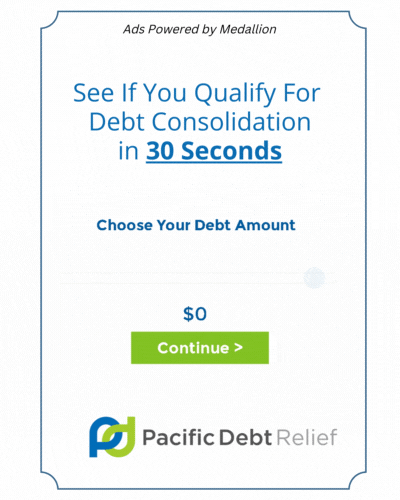The 401k has been one of the most popularly chosen retirement investment funds for a long time. It offers future savings as well as tax benefits in the form of deferred taxes and tax-free gains. However, it does come with some drawbacks too.
These include a limited choice of investment 401K funds options and the choice of it being left on the client who lacks the expertise to select the right plan.

If you’re applying for a 401K soon, then we have gathered everything you need to know below.
How to pick a 401K plan?
A 401K plan usually offers a selection from 10 to 12 investment funds, so how does one choose the right plan for themselves?
For most investors, limited choices are an advantage as it simplifies the process. However, experienced investors may find it quite restrictive, and choose to go with IRA as it offers unlimited selection.
You should consider the following two factors when selecting a 401k plan:
- Returns over a long term: The returns on your fund over the period of 5 to 10 years
- Expense ratio: The total cost of holding the fund per year
Ideally, you should be looking for a plan that offers the best returns at a minimum cost. That might sometimes require compromising on performance in exchange for a lower cost. If you want to avoid that, then you can also opt for a higher fee that offers better returns over the long term.
Make sure you pay attention to the long-term performance of a plan. Many plans offer good returns over the first couple of years, but their performance declines significantly after that.
Target-date funds are another excellent option if you want a fund that provides the exact amount that you need on your given retirement date. With this method, the fund makes the investment choice for you, and you’re provided with your desired fund at retirement. It’s a custom-made solution, so it costs a little more.
If you think, that’s the right path for you then you’ll have to manage your own portfolio, let’s discuss how to do that below.
Creating a 401K portfolio
When you build your 401K portfolio, you need to consider the following factors:
- Your financial goal: Your portfolio must reflect your financial goals exactly. For instance, if you want better returns, it should have more investments in stock funds.
- Diversifying your portfolio: If you have a diverse portfolio, you’re more likely to minimize risks and increase your returns over the long-term.
- Risk assessment: Take risks moderately and manage them in a way that helps your portfolio grow instead of stressing you out.
- Your time frame: If you have a lot of time until retirement, then you’ll have more freedom to take risks and generate returns.
Along with choosing the best fund with the lowest cost, you should also determine how much to invest in funds as per your financial situation and long-term goals.
Diversifying your portfolio is an essential factor because you can reduce the risks by not investing everything in one kind of asset. To do that, you should have an allocation to large stocks along with medium and small-cap stocks. Although stocks fluctuate much more than bonds, bonds have a more stabilizing impact on your portfolio and provide income reliably. Therefore, you must balance the risk by investing in different funds.
It also largely depends on the time you have. For example, if you’re a person in your 20s or 30s, then you could allocate much of your investments to stocks. However, if you only have a few years left until retirement, then its more favorable to not rely on stocks to minimize risk and increase reliability.
If you’re not experienced in investing, then a few plans offer suggested allocations after asking you a series of questions based on risk tolerance.
Once your investment allocation has been set up, you won’t have to do much except an annual review. However, if you’re building your own portfolio, then you’ll have to rebalance on a regular basis to keep it on track for your desired results.
Funds that are managed passively, like index funds, usually outperform most of the funds that are actively managed. Passively managed funds are also relatively cheaper.
How to choose a target-date fund?
Most people tend to avoid managing their own investments as it puts a greater responsibility on themselves, especially if they are not familiar with this field. Few 401k plans offer guidance and might even provide consultancy with a financial advisor, but most funds don’t provide this option.
A target-date fund is a prospective alternative to create a portfolio professionally. As you get closer to your target date, your fund will automatically take up a conservative route by moving your investments from stocks towards bonds. Although different companies have different target-date funds, they are all diversified and rebalanced regularly.
A target-date fund is often considered a safe choice, as it allows you to be rid of worry once you’ve set it. But that doesn’t imply that these funds are problem-free. They provide diversity in investments, but they also need to be checked for expense ratios.
Some experts suggest that you shouldn’t choose a date close to your retirement time. Some even recommend selecting a time 10 to 15 years beyond your retirement date as life expectancy is increasing each year, and people are vulnerable to the risk of exhausting their retirement funds during their lives.
Few 401K plans also offer asset allocation funds, which allocate investments in various assets. These funds are classified as aggressive, moderate, and conservative. Aggressive funds have more allocations to stocks, and the conservative funds are more inclined towards bonds.
Conclusion
Not everyone is well-versed in the domain of investing in 401K; therefore, it’s essential that you do your research thoroughly and understand the basic concepts of fund allocations before selecting a plan. Learning about your options will save you from higher-risk investments and will help you choose the right plan according to your needs.








